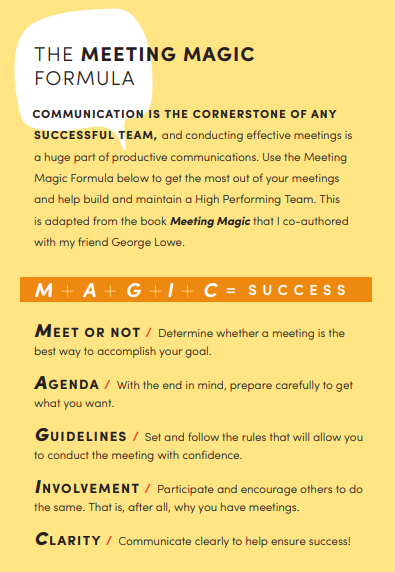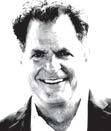Use this simple strategy to help your team perform at the highest level.
Years back, when coaching the president of Ford Motor Company, I turned down a request to work with approximately 200 of their top leaders around the subject of High Performing Teams, because I wasn’t a team-building expert. But when they sweetened the deal by saying, “We’ll give you a million dollars,” I said, “I’ll become one.” That budget allowed me to hire people who were able to help me through the process of becoming an expert.

Over the last 25 years, the model that has proved out from that initial research, along with my book called High Performing Teams, has allowed me to impact the cultures of thousands of organizations by raising the level of their teams into High Performing Teams (HPTs).
Are your results falling short of your expectations? Maybe it’s because your teams are not operating at their highest level. Think back to the best teams in history and ask yourself what they have in common. Strong leadership, talent, experience, synergy and diversity are just a few of the characteristics shared by extraordinary teams. I propose that if you’re willing to adopt a new mindset—perhaps sharpen a few of your thoughts about what a team should look like—candidly assess where you are in that regard and really focus on forming a High Performing Team, then your overall company results will improve.
Many people have just never thought about the difference between a Group, a Team and a High Performing Team.
- A Group is just people working independently with no real common goals or tasks. Even so, their work can still collectively add up to a profitable enterprise.
- A Team is a group of people working together more interdependently toward a common goal.
- A High Performing Team focuses on being as effective as possible, while continually reevaluating to work toward better standards. Each team member has a high level of investment in the outcome/vision and is individually motivated. Since they’re committed to working together toward the same vision, team synergy is high.
Most people at the top of an organization want it to work as a High Performing Team because just the synergy alone leverages so many wins. Synergy utilizes collective intelligence and expertise; it expands leadership bench strength; it supports training; and it promotes engagement and enjoyment.

And when everything is aligned within a team, execution is streamlined, and the right results happen. Both organizations and individuals thrive when the culture is a High Performing Team. This should be at the heart of any organization, because business is a results contest.
So how do you go about creating a High Performing Team? Start with rating your team to see how far you need to go, then make your people aware of what you’re doing by showing them the vision of where you want to go. Then have each person evaluate themselves to see if they are part of a group or a team and see if they are motivated to become a part of a High Performing Team.
Our model for a High Performing Team is ACT, which stands for Accountability, Communication (starting with a shared vision) and Trust.
Accountability
Having accountability in a team means people do what they say they will. Team members finish tasks on time—or before—and communicate their progress well. When time commitments cannot be met, they are renegotiated. Measurable results are produced with consistency.
Communication
The vision/mission is understood and shared by every team member. Whenever possible, communication is thorough, so unknowns become knowns to all team members. The right tools are being used, and meetings are focused, bring clarity and maximized in a way that inspires the team members to execute well. The organization has established meeting standards, so when someone joins the company, they know what to expect.
Appropriate information is cascaded down at appropriate times and in the appropriate level of detail to the entire organization (such as when things change, as new information becomes known, and as the company grows and matures).
Trust
Individual expertise is valued, honored and respected by all, and team members are empowered. Expectations are managed carefully, and team members follow through. Team members are positive and helpful to each other and don’t talk behind each other’s backs. They are a single unit working together toward a common goal. There is consistent follow through on all promises and commitments.
Use the ACT Model to build your High Performing Team as you continue to hone skills and improve effectiveness. High Performing Teams generate commitment, and they provide the structure and a common vision that inspire people to give their best effort. They’re committed to excellence and to getting results. When designed and managed in a way that fosters results, a High Performing Team can literally transform an organization.

Tony Jeary—The RESULTS Guy™— is a renowned strategist, executive coach and keynote speaker who changes people’s thinking. He and his team uniquely facilitate planning sessions in his one-of-a-kind RESULTS Center to help direct selling executives learn, grow, evolve and thrive.
From the December 2022 issue of Direct Selling News magazine.


